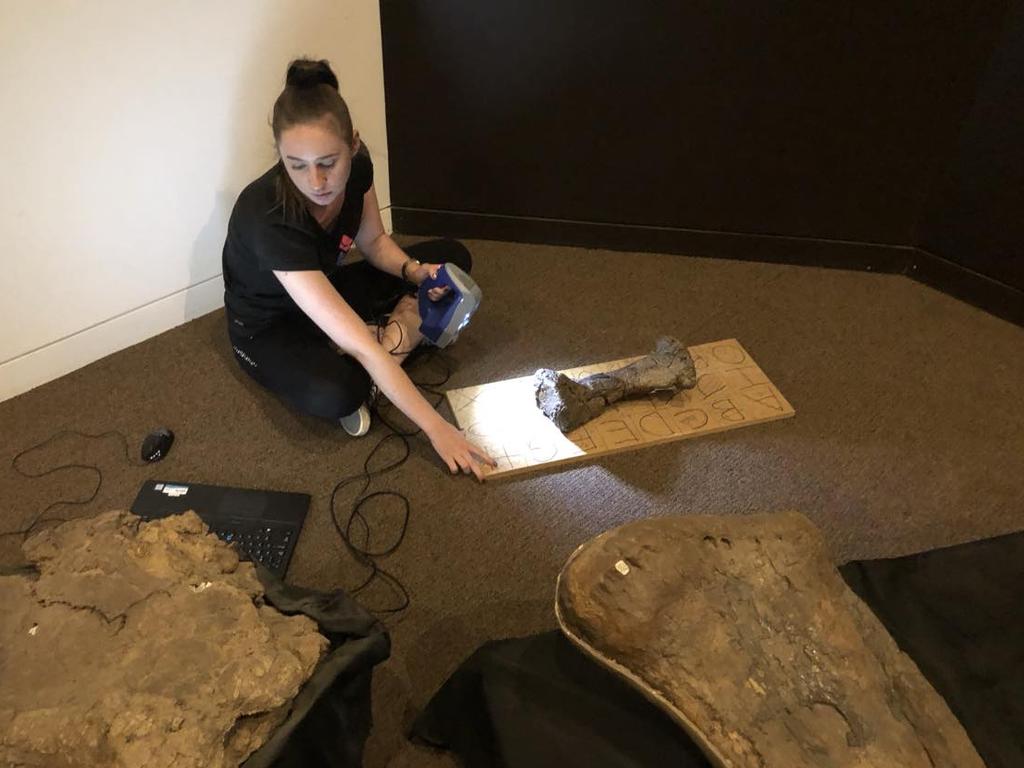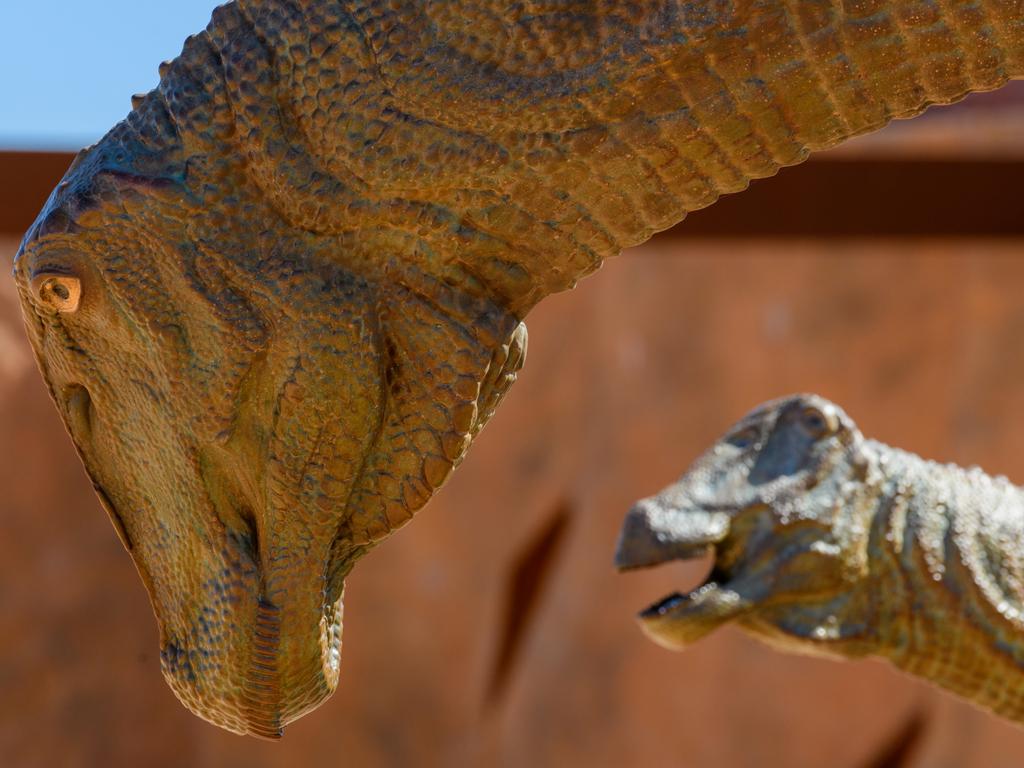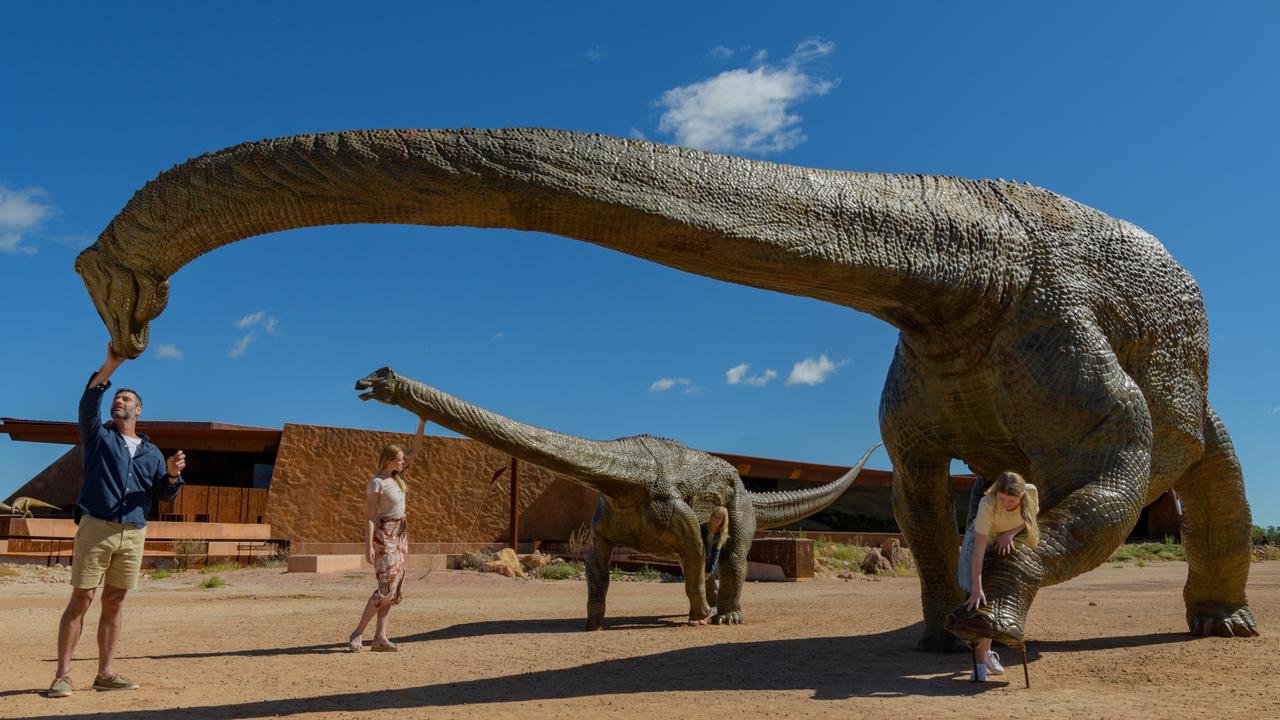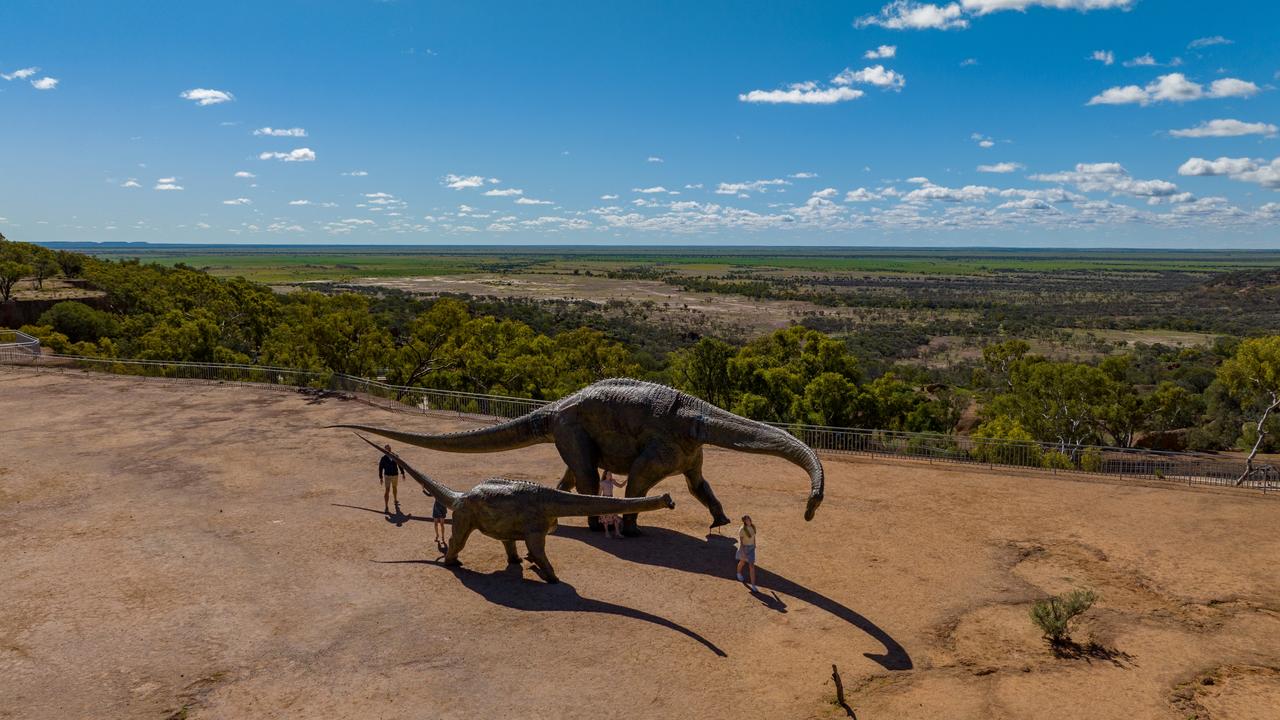Young Aussie’s 3D scans delivers groundbreaking dinosaur findings
The long footprint of Australia’s unique sauropods across the Winton Formation in central Queensland has taken a leap into the future with 3D scanning technology identifying 12 new specimens

READING LEVEL: ORANGE
Australian sauropods* have intrigued researchers for over a century – and dino girl Samantha Beeston‘s full-blown fascination has defined her studies and perhaps even her future.
But palaeontology* is a long game and classifying the species has always presented challenges because of incomplete skeletons and the limits of technology.
So Ms Beeston’s groundbreaking study is big animal news in more ways than one. Collaborating with the Australian Age of Dinosaurs Museum of Natural History in Queensland, her research sheds exciting new light on these gigantic herbivores*.

The University College London PhD candidate digitally scanned over 500 sauropod bones from the museum’s collection, covering a large portion of Australia’s Cretaceous* sauropod record from the famous Winton Formation* in central Queensland.
“What’s really exciting about my project is that 10 years ago, it wouldn’t have even been possible,” Ms Beeston said. “The 3D scanner that I used to digitise all of the sauropod specimens allowed me to be able to better describe and compare them all with each other.”

According to Ms Beeston, Australia’s sauropod dinosaurs are unique.
“That’s really special,” she said. “So the discovery of 12 new specimens that are filling in the gaps of our knowledge of Australia’s sauropods is really helping palaeontologists all around the world to be able to compare what we have with the anatomy* of their sauropods.”

Ms Beeston’s scans also identified unique features, distinguishing known species from each other in newly described specimens, including iconic* ones like Matilda (Diamantinasaurus matildae) and Wade (Savannasaurus elliottorum).
The research team’s study, published April 10 in scientific journal PeerJ, led to two previously undescribed specimens being confidently assigned to the Matilda species, two more to Wade and three to Wintonotitan wattsi.
The fourth species, Australotitan cooperensis, was Australia’s largest dinosaur.

Having so few Australotitan bones preserved makes it very difficult – if not impossible – to assign new specimens to it, Ms Beeston said, or to differentiate it from any of the other Winton Formation sauropod species.
“Due to the limited fossil evidence for Australotitan, resolving its classification will be challenging,” she said.
The remaining five were more broadly classified as Diamantinasauria.

According to the Australian Age of Dinosaurs Museum’s executive chairman David Elliott, having another 12 of the museum’s sauropod specimens identified and described is a significant leap in Australian palaeontological research.
“These dinosaurs help demonstrate the diverse natural history of Australia during the Cretaceous Period and will become important exhibits at the new Australian Age of Dinosaurs Museum of Natural History,” he said.
The museum is currently seeking funding for a multimillion-dollar Museum of Natural History in the outback.

POLL
GLOSSARY
- sauropod: very large, four-legged herbivorous dinosaur with a long neck and tail
- postgraduate: a course of study undertaken after finishing a first tertiary degree
- palaeontology: scientific study of the history of life on Earth as based on fossils
- herbivores: species that were plant-eating only
- Cretaceous: the last of the three periods of the Mesozoic Era, it began approximately 144 million years ago and ended around 65 million years ago
- Winton Formation: an important source of Cretaceous Australia information, this rock unit covers large areas of central-western Queensland and consists of sedimentary rocks such as sandstone, siltstone and claystone
- anatomy: scientific study of a plant or animal body and how its parts are arranged
- iconic: something or someone important or impressive and seeming to symbolise something
EXTRA READING
Australia’s incredible ‘dinosaur boom’
3D print to rebuild Australian opal dino
Dinosaurs’ ferocious fight to the death
QUICK QUIZ
- How many new sauropod specimens have been described by Ms Beeston’s study?
- How many 3D scans were used in her research?
- What is the scientific name given to Australia’s largest dinosaur?
- Why has classifying Australian sauropods always presented challenges?
- What is the Australian Age of Dinosaurs Museum currently seeking funding for?
LISTEN TO THIS STORY
CLASSROOM ACTIVITIES
1. Tour guide
Let’s imagine you are a tour guide at the Australian Age of Dinosaurs Museum of Natural History. Write a script for your tour, detailing what you will tell visitors about the dinosaurs found in the Winton Formation.
Give your visitors details on the bones that have been found, the dinosaurs they have come from, when these dinosaurs lived and what is known about them.
Explain how researchers have tried to discover more and the challenges to their research. Remember to write the way you would speak to a live audience and that visitors to the museum would be a wide range of ages.
Time: allow 30 minutes to complete this activity
Curriculum Links: English; Science
2. Extension
Name five common features of sauropods.
Identify a sauropod from outside of Australia. Find three similarities and three differences to one of the Australian sauropods.
Time: allow 30 minutes to complete this activity
Curriculum Links: English; Science
VCOP ACTIVITY
Activity: Design your own dinosaur
Objective:
– To engage children in creative writing and imaginative thinking inspired by the article about sauropod research.
– To develop descriptive writing skills and vocabulary.
– Suitable for children aged 7-10.
Instructions:
1. Introduction (two minutes):
– Briefly discuss with the students what they know about dinosaurs, specifically sauropods, based on the article.
– Explain that they will use their imagination to create their unique sauropod dinosaur.
2. Discuss and brainstorm (three minutes):
– Based on the research in the article, discuss how different sauropod species might have varied in appearance, habitat and behaviour.
– Encourage students to brainstorm ideas for their dinosaur, considering its appearance, size, habitat, diet and any special features.
– Provide prompts such as: What does your dinosaur look like? How big is it? Where does it live? What does it eat? Does it have any unique characteristics?
Example dinosaur design for modelling:
Name: Firecrestosaurus
Appearance: Firecrestosaurus has bright red scales covering its long neck and back, with orange stripes running down its sides. Its eyes are glowing yellow, and its head has sharp, pointed horns.
Size: It stands as tall as three elephants stacked on top of each other!
Habitat: Firecrestosaurus lives in the dense forests of the Cretaceous period, where it can blend in with the fiery foliage.
Diet: It primarily eats large plants and trees, using its long neck to reach the juiciest leaves at the top of the trees.
Special Features: When threatened, Firecrestosaurus can breathe out small bursts of fire from its nostrils, scaring away predators.
3. Design Your Dinosaur (five minutes):
– Give each student a piece of paper or their notebooks.
– Instruct them to draw and describe their dinosaur using specific tier three words and descriptive sentences.
– Encourage them to be as creative as possible and to include detailed descriptions of their dinosaur’s appearance, habitat, and unique features.
(I encourage students to name their species last, as this can be a hurdle for many students that stops them from getting started)
4. Share and discuss (two minutes):
– Invite a few students to share their dinosaur designs with the class.
– Encourage them to read their descriptions aloud and explain the inspiration behind their designs.
– Discuss how each dinosaur is unique and how they used descriptive language to bring their creations to life.
Extension (optional):
– Encourage students to create a story or adventure featuring their dinosaur as the main character.
– Display the dinosaur designs around the classroom for everyone to admire.


